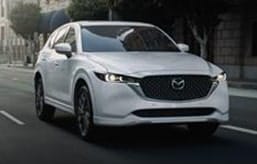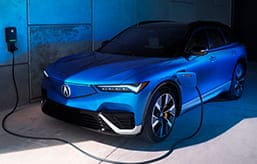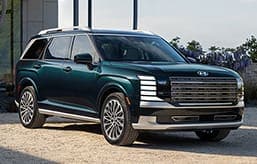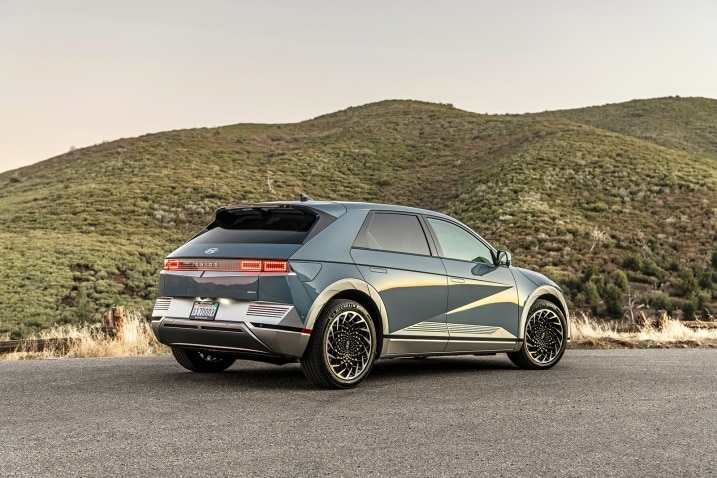- The dual-motor 2022 Hyundai Ioniq 5 Limited covered 270 miles in Edmunds' real-world EV range test, creeping by its EPA-estimated range of 256 miles.
- Based on previous Hyundai EVs, we thought the Ioniq 5 might do 300-plus miles.
- The Ioniq 5 is one of the few EVs to employ 800-volt architecture, which allows for super-quick charge times.
TESTED: 2022 Hyundai Ioniq 5 Beats Its EPA Range but Trails the Competition
Fails to join Kona Electric in Hyundai's 300-mile club
We've been eager to get our hands on the all-new 2022 Hyundai Ioniq 5, which is the first model from Hyundai designed solely to be an EV. Not that we didn't appreciate the electrified versions of the Hyundai Kona and the Ioniq hatchback, but the Ioniq 5 is a legitimately modern offering that's attractively sized for anyone needing something more than a city runabout.
The Ioniq 5 sits alongside the Tesla Model Y, Ford Mustang Mach-E and Volkwagen ID.4 in terms of size and offerings — think Honda CR-V or Toyota RAV4, except fully electric and a bit more upscale. The standard battery pack in the single-motor, rear-wheel-drive Ioniq 5 is a 58-kilowatt-hour unit, but our test car had the larger 77.4-kWh pack and the optional second motor, which powers the front wheels and adds significant speed and all-wheel-drive traction. Combined, the two electric motors provide a healthy 320 horsepower and 446 lb-ft of torque. One thing all Ioniq 5 models benefit from is advanced 800-volt system architecture, which, in a nutshell, allows an Ioniq 5 equipped with the large battery to recoup 70% of its battery charge in as few as 18 minutes, assuming optimal conditions.
Got all that? Good, so let's talk range. With our test car's larger battery and dual-motor configuration, the EPA estimates 256 miles of range on a single charge. But how would it perform on our real-world EV range loop? We were excited to find out.
Am I Ready for an EV?
- EV ownership works best if you can charge at home (240V outlet)
- Adding a home charging system is estimated to cost $1,616 in
- Edmunds is partnering with Treehouse, an independent provider of home EV installation services. Learn more about the installation services partnership
Testing the Ioniq 5 in the real world
Edmunds tests every new electric vehicle on the same real-world driving loop to see just how far it can travel from a full charge down to zero miles remaining. If you scroll through our EV range leaderboard, you'll see that most EVs have matched or exceeded their EPA range estimates in our testing. Much of that has to do with our ability to test in near ideal conditions year-round.
Our Ioniq 5 test car was a fully loaded Limited trim model, equipped with 20-inch wheels and all-season tires (Michelin Primacy Tour A/S, 255/45 R20) at all four corners, inflated to the factory-recommended pressure of 34 psi (a far lower tire pressure than we're used to seeing for EVs). It weighed in at 4,698 pounds, which is lighter than both the Mustang Mach-E and VW ID.4 but a couple of hundred pounds heavier than the Tesla Model Y.
Over the course of a full day of driving at a slightly chilly average temperature of 55 degrees, we managed to travel a total of 270 miles. That's 14 miles more than the EPA estimate, a modest improvement of 5.5%. By comparison, the Hyundai Kona Electric and Ioniq Electric outperformed their estimates by 21.9% and 18.9%, respectively — and they're not even purpose-built EVs, i.e., they're based on existing platforms built for gasoline powertrains. We figured the Ioniq 5 would at least match the overdelivery of its Hyundai EV stablemates.
Hyundai Ioniq 5 range versus the competition
Comparing the Ioniq 5 to other Hyundai EVs is one thing, but we've also verified in our testing that comparable models from Tesla and Ford surpass the 300-mile range mark. Ford's Mustang Mach-E Premium Extended Range, which is EPA-estimated at 270 miles of range per full charge, managed 304 miles in our testing, while Tesla's Model Y Long Range managed 317 miles. Even the Kia Niro EV — another retrofit of a car designed for gasoline — rolled up 285 miles on our real-world route.
That's not to say that 270 miles is subpar exactly. It's just that the Ioniq 5 could have made more of a splash with 300-plus-mile capability right out of the gate. To be fair, the rear-wheel-drive Ioniq 5 Long Range has an EPA-estimated range of 303 miles. Stay tuned for our test of that variant to see if the Ioniq 5 can get into the 300-mile club with a different configuration.
So how much did those 270 miles cost?
While the total range of a vehicle continues to dominate the EV conversation and will likely be a popular talking point for the Ioniq, energy consumption is an important factor as well. Energy consumption is what determines how much your miles will cost you. The unit of measurement for consumption, the kilowatt-hour, can be thought of as the EV equivalent of a gallon of gasoline. Just like gas, the price of electricity varies depending on where you live. For example, you'll pay about 10 cents per kWh in Washington as of this writing, whereas in Hawaii it'll run you about 34 cents.
So, what can Ioniq 5 owners expect to pay at "the pump"? After charging the battery back to full, we calculated an Edmunds consumption rate of 30.9 kWh/100 miles, which is 9.1% more efficient than the EPA estimate of 34 kWh/100 miles. If we lived in Hawaii, our 270-mile trip in the Ioniq 5 would have cost us $28.37, while if we lived in Washington, that same trip would cost just $8.34.
If we compare the Ioniq 5 to its most efficient competition, the Tesla Model Y Long Range (26.2 kWh/100 miles), the same 270 miles would have cost $24.05 in Hawaii and $7.07 in Washington. The takeaway here is that the differences in your fuel bill will be relatively marginal if choosing between the Ioniq 5 and any one of its closest competitors.
How about a gasoline-powered equivalent? The Audi SQ5 is similarly sized and priced and relatively comparable in performance, if not a step behind the Ioniq 5 we tested. The SQ5's turbocharged 3.0-liter V6 requires premium fuel and is estimated to return a rather mediocre 20 mpg in combined driving. Driving it for 270 miles would have set us back $64.80 in Hawaii ($4.80 per gallon) and $58.59 in Washington ($4.34 per gallon) at current prices, assuming we got the SQ5's combined mpg.
Based on these numbers, you could save an estimated $1,349 per year in Hawaii and $1,861 per year in Washington by driving an Ioniq 5 for 10,000 miles instead of an SQ5. Aside from the Ioniq's radical styling, which you may or may not dig, and its less luxurious interior, there really aren't advantages in going the SQ5 route apart from being able to say you drive an SQ5.
For more information on how we test EV range and how each vehicle performed, we invite you to visit our Real World vs. EPA testing page, which includes both our EV range leaderboard and a table with detailed test results. Our EV range leaderboard is embeddable and will automatically update every time we add a new vehicle.
Edmunds says
The 2022 Hyundai Ioniq 5 delivered on its EPA range and efficiency estimates but didn't outperform them to the degree we were expecting based on the previous Hyundai models we tested. That doesn't make it a disappointment, however — it still has plenty of range, and its ability to charge quickly is a definite plus as well. We're looking forward to comparing how the other versions of Ioniq 5 do in our tests in the near future. For our latest comprehensive ratings of all electric vehicles, head over to Edmunds' EV rankings page.







 by
by